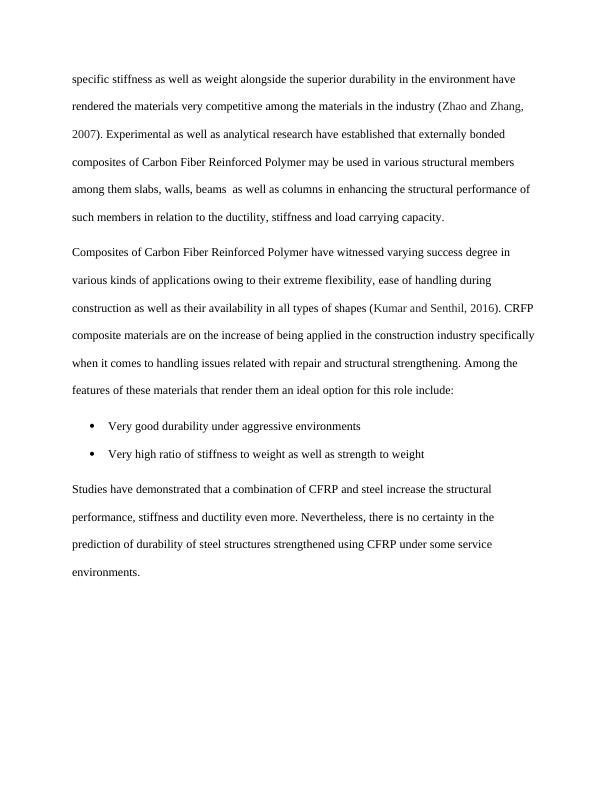Steel Tubular Beams Strengthened with CFRP: A Review
Investigation of the strength of circular hollow sections (CHS) tubular beams externally reinforced by carbon FRP sheets in pure bending.
9 Pages2137 Words37 Views
Added on 2023-01-18
About This Document
This research paper provides a comprehensive review of the use of Carbon Fiber Reinforced Polymer (CFRP) in strengthening steel tubular beams. It discusses the limitations of conventional steel tubular beams and the benefits of using CFRP. The paper also explores the bond characteristics between steel and CFRP, as well as design considerations for circular and square hollow steel sections. The research identifies the research gap in fully exploiting the potential of CFRP in construction industry.
Steel Tubular Beams Strengthened with CFRP: A Review
Investigation of the strength of circular hollow sections (CHS) tubular beams externally reinforced by carbon FRP sheets in pure bending.
Added on 2023-01-18
ShareRelated Documents
End of preview
Want to access all the pages? Upload your documents or become a member.
FRP Strengthened CHS Member under Lateral Impact
|49
|12109
|91
Recommendations to Strengthen the Old Bridge without Demolishing the Bridge
|5
|857
|163
College of Engineering and Science docx.
|6
|1042
|16
Effect of Different Temperatures on FRP Beam
|50
|16967
|419
ENGR8862 Structural Engineering
|13
|2341
|248
Catamaran Design: Materials and Methodology
|14
|2477
|268



